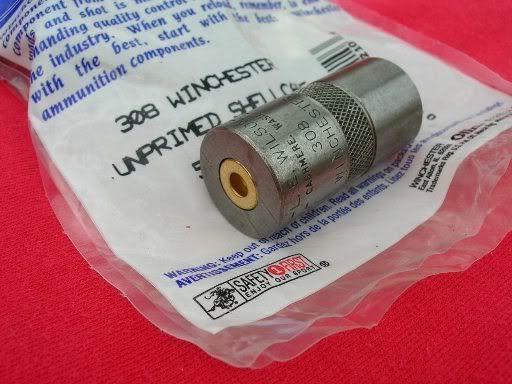The ammo were my reloads. I will buy factory and try again.
My reloads slide into the chamber easy.
I can't believe how sloppy the bolt moves thru the receiver. Nothing like my Garand.
You have to be far more particular about reloading for gas guns than for bolt action rifles. You can get away with sloppy, over sized, slow burning powders in bolt rifles, but the same ammunition will cause malfunctions in a M1a. My advice for reloading for M1a’s is to
1. Full length resize in a small base die
2. Trim cases
3. Clean primer pockets, ream to depth
4. Prime all cases by hand, verify that all primers are below the case head, and use the least sensitive primers you can find. I recommend CCI #34's or tula mil spec.
5. Use IMR4895/AA2495/H4895 powders.
6. Seat the bullets to magazine depth, no longer than 2.8 for the 308, shorter is fine.
It is important to small base size cases used in these rifles and to set up the dies with a case gage and size to gage minimum. (Assuming you don’t know the headspace of your chamber, if you do, always be 0.002 to 0.003” less) You want the bolt to close without resistance. This will reduce the risk of an out of battery slamfire. I am of the opinion that the reason you saw light dimples on your primers is because your cases are too long for the chamber. The bolt was not completely closed and the hammer energy was spent in crushing the cartridge to the chamber. This problem can be avoided by using case gages.
There are some who say small base dies are not needed in these rifles, the Gunwriter Mike Venturino has been one. For years he has been saying in print that only standard sizing dies are need. But in the July 2012 issue of Guns Magazine, he is testing an M1a and a AR10 and his reloads are too tight. I find it humorous to read of him beating the bolts open with scrap lumber. Ha, Ha.
If you attempt to small base size with a spray on lube you will stick the case in the die. I recommend RCBS water soluble or Imperial Sizing wax. These are excellent lubes.
For these rifles it is safety critical to ensure that all primers are below the case head. Reaming primer pockets to depth is a good idea. Seat the primers by hand, and verify that all of the primers are below the case head. There is a chance that a cocked primer, with the anvil firmly seated on something, will cause a primer initiated slamfire. One poster swaged his primer pockets, which shaved brass donuts into the pocket. He left the donuts in the pocket, which resulted in high primers, and his AR10 slamfired in battery. Clean those pockets! A high primer can cause a slamfire but only if the anvil is firmly seated. High primers are one of the most common cause of misfires because the primer won't fire unless the anvil is seated and is pushed up into the primer cake.
http://www.shootingtimes.com/2011/01/04/ammunition_st_mamotaip_200909/ However, given a shallow pocket it is theoretically possible that high primers could slamfire, given debris in the pocket, you can get a slamfire.
Any service rifle that has a free floating firing pin can slamfire at any time if improper ammunition is used. The use of commercial factory ammunition or reloads that use soft or more sensitive primers often create slamfires.
Because SKS’s slamfire so often, there are lots of slamfire reports with SKS’s, Murray’s has a firing pin modification to reduce the chance of slamfires. Also, the SKS boards has this excellent “A primer on primers”
http://www.sksboards.com/smf/index.php?topic=56422.0
Springfield Armory M1A Manual, page 4
http://www.springfield-armory.com/do...=M1AManual.pdf.
Ammunition
The M1A is designed and built to specifications to shoot standard factory military 7.62 NATO ammunition. The specifications for standard military ammunition include harder primers to withstand the slight indentation from the firing pin when the bolt chambers a cartridge. This slight indentation is normal. The use of civilian ammunition with more sensitive primers or hand loads with commercial primers and/or improperly seated primers increase the risk of primer detonation when the bolt slams forward. This unexpected "slam fire" can occur even if the trigger is not being pulled and if the safety is on. Use of military specification ammunition will help avoid this.
Every shooter should use extreme caution when loading this or any other firearm. See page 17 for instructions on proper loading to help avoid a "slam fire". Also see enclosed article on “Slam Fire” written by Wayne Faatz
Federal primers are the most sensitive primer on the market and the most "slamfiring" primer in Garands/M1a's. I have lots of web accounts of slamfires with Federal primers. Don’t use them. I recommend CCI #34's and Tula7.62 primers as they considered "Mil Spec" primers. Which means they are less sensitive than commercial primers, federal being the most sensitive commercial primer on the market
When firing single shot, load from the magazine. Do not put a round in the chamber and drop the bolt. Lots of inbattery slamfires, and a few out of battery, have happened because of this. You want to slow the bolt down. When rounds feed from the magazine the friction between cartridges slows the bolt a bit.

